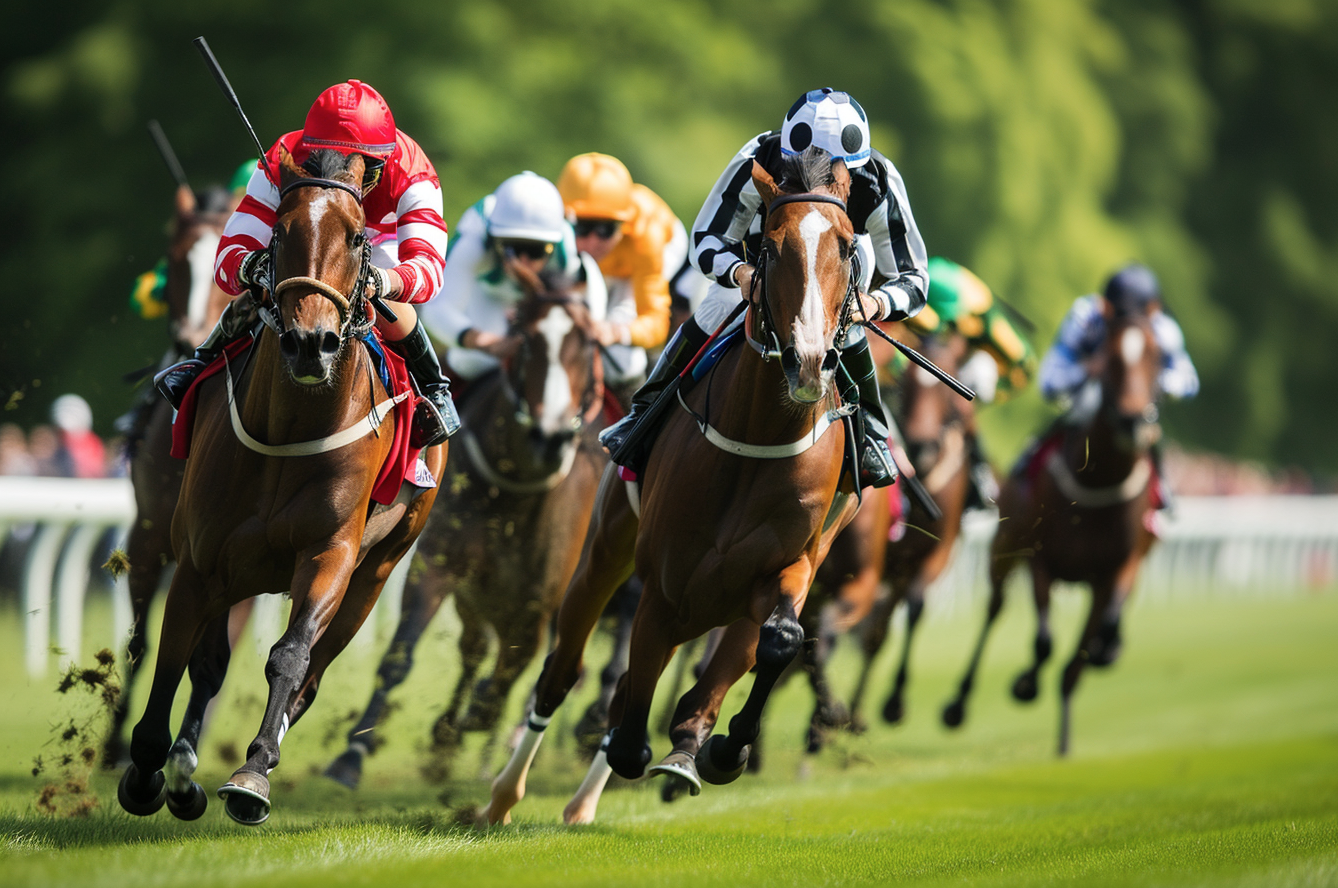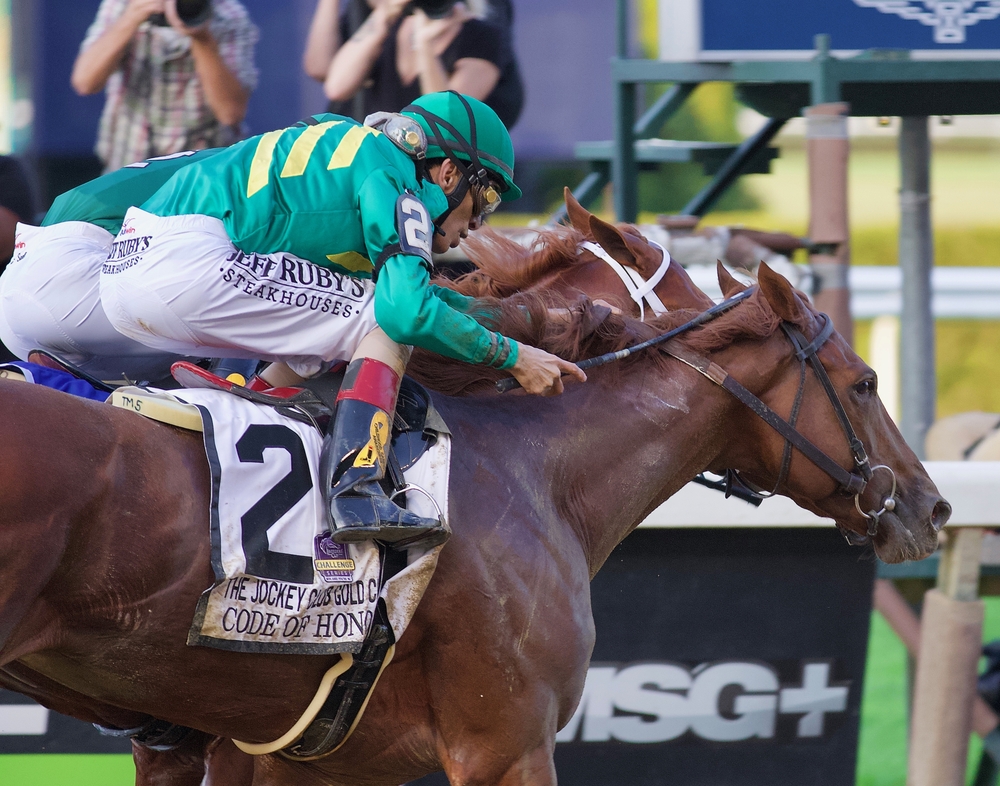Racehorses are known for their incredible speed and agility, which is why they are often used for racing and other competitive events. The question of how fast racehorses can run is a common one, and it is one that has been studied and debated for many years. While there is no one definitive answer to this question, there are many factors that can influence the speed of a racehorse.
One of the most important factors that can affect the speed of a racehorse is its physiology. Racehorses are bred specifically for their speed and agility, and they have a number of physical adaptations that allow them to run faster and more efficiently than other horses. These adaptations include longer, more flexible limbs, larger hearts and lungs, and a higher proportion of fast-twitch muscle fibers. Additionally, racehorses are carefully trained and conditioned to maximise their speed and endurance, which can also have a significant impact on their performance.
Key Takeaways
- Racehorses are bred specifically for their speed and agility, and they have a number of physical adaptations that allow them to run faster and more efficiently than other horses.
- The speed of a racehorse can be influenced by a wide range of factors, including its physiology, training, and conditioning.
- While there is no one definitive answer to the question of how fast racehorses can run, it is clear that they are among the fastest animals on the planet.
Evolution of Racehorse Speed
Historical Speed Records
Racehorses have been bred for speed and stamina for centuries, with recorded history of horse racing dating back to ancient civilisations such as Greece and Rome. The first recorded race in Britain was in the 12th century, and horse racing has since become a popular sport around the world.
Over the years, racehorses have broken numerous speed records, with some of the most iconic horses holding records that have stood for decades. For instance, Secretariat, an American Thoroughbred racehorse, still holds the record for the fastest time ever recorded in the Kentucky Derby, completing the race in just 1 minute and 59 seconds. Another legendary horse, Man o’ War, set multiple speed records in the 1920s, including the world record for the fastest mile on dirt.
Influence of Breeding on Speed
One of the key factors contributing to the evolution of racehorse speed is breeding. Breeders have been selecting horses with desirable traits such as speed, stamina, and agility for centuries, and this has led to the development of various horse breeds, each with its unique characteristics.
Thoroughbreds, for instance, are known for their speed and agility, making them ideal for horse racing. They are descendants of three foundation stallions: the Darley Arabian, the Godolphin Arabian, and the Byerley Turk. These horses were bred with local mares in England in the late 17th and early 18th centuries, resulting in a breed that is now renowned for its speed and athleticism.
Iconic Racehorses and Their Legacy
Several iconic racehorses have left a lasting legacy in the world of horse racing, inspiring breeders to produce faster and more agile horses. For instance, the legendary Seabiscuit, an American Thoroughbred racehorse, became a national hero during the Great Depression, winning numerous races and capturing the hearts of millions of Americans.
Similarly, Black Caviar, an Australian Thoroughbred racehorse, won all 25 of her races, becoming one of the most successful racehorses in history. Valiant Pete, a British Thoroughbred racehorse, also made history by becoming the first horse to win a race at over 50 miles per hour.
Racehorse Breeds and Characteristics
While Thoroughbreds are the most popular breed for horse racing, other breeds such as Quarter Horses, Arabians, and Appaloosas also have their unique characteristics that make them suitable for racing. Quarter Horses, for instance, are known for their speed and agility over short distances, while Arabians are renowned for their stamina and endurance.
In conclusion, the evolution of racehorse speed has been shaped by various factors such as breeding, genetics, and training. With new technologies and advancements in breeding techniques, it is likely that racehorses will continue to get faster and more agile in the years to come.
Physiology of Speed
Racehorses are known for their incredible speed and athleticism. Their ability to run at high speeds for extended periods of time is due to their unique physiology. In this section, we will explore the anatomy and muscle structure of racehorses, their stride mechanics and rate, as well as the role of diet and training in their speed.
Anatomy and Muscle Structure
The muscular system of racehorses is highly developed, with long, powerful muscles that allow them to generate a tremendous amount of power. Their hindquarters, in particular, are incredibly strong, providing the driving force for their gallop. The height of a horse can also play a role in its speed, as taller horses have longer strides and can cover more ground with each step.
Stride Mechanics and Rate
The stride of a racehorse is a complex movement that involves a combination of power and coordination. A horse’s stride rate, or the number of strides it takes to cover a certain distance, is an important factor in its speed. The ideal stride rate for a racehorse is around 130 strides per minute, although this can vary depending on the horse’s size and other factors.
The Role of Diet and Training
Diet and training are also important factors in a racehorse’s speed. A diet that is high in protein and other essential nutrients can help to build and maintain muscle mass, while training can improve a horse’s cardiovascular fitness and endurance. Trainers use a variety of techniques to improve a horse’s speed, including interval training, hill work, and sprinting.
In conclusion, the speed of a racehorse is the result of a complex interplay between biology, power, and athleticism. By understanding the anatomy and muscle structure of these amazing animals, as well as their stride mechanics and rate, we can gain a deeper appreciation for their incredible speed and endurance.
Racing Dynamics
Understanding Track Surfaces
The track surface plays a crucial role in determining the speed of racehorses. In Britain, most flat races take place on turf, which is a natural surface made of grass. On the other hand, in the USA, dirt tracks are more common.
Turf tracks are generally considered to be faster than dirt tracks. This is because turf provides a more consistent surface for horses to run on, which allows them to maintain their speed throughout the race. Dirt tracks, on the other hand, can become uneven and loose, which can slow horses down.
Race Formats and Distances
The format and distance of a race also play a significant role in determining how fast racehorses run. In Britain, the most common race format is the flat race, which is run on a level track without any obstacles. The most common distances are five and six furlongs, which are considered to be sprint distances.
In the USA, there are several different race formats, including flat racing and steeplechase racing, which involves jumping over obstacles. The most common distances for flat races are six furlongs and one mile.
Factors Affecting Race Speed
Several factors can affect the speed of racehorses, including competition, strength, stamina, and endurance. Horses that are in good physical condition and have strong muscles are generally faster than horses that are not.
Additionally, the quality of the competition can also affect race speed. If a race has several fast horses competing against each other, the overall speed of the race is likely to be faster than if there is only one fast horse.
Overall, the average speed of a racehorse varies depending on the race format, distance, and track surface. In a five-furlong handicap sprint, the average speed of a racehorse can be between 35 and 40 miles per hour. In the Epsom Dash, which is run over a distance of five furlongs and 10 yards, the fastest horses can reach speeds of up to 45 miles per hour.
Speed Measurement and Records
When it comes to measuring the speed of racehorses, there are several factors to consider. In this section, we will discuss the various methods of speed measurement, notable speed records and achievements, and the comparative speed across different breeds.
Guinness World Records and Achievements
The Guinness World Record for the highest race speed achieved by a horse is held by Winning Brew, a two-year-old thoroughbred, who ran a quarter-mile in just 20.57 seconds at the Penn National Race Course in Pennsylvania in 2008. This impressive feat earned him a place in the Guinness World Records.
Another notable achievement in the world of horse racing is the Triple Crown, which is awarded to a three-year-old Thoroughbred that wins the Kentucky Derby, Preakness Stakes, and Belmont Stakes. Only 13 horses have achieved this feat in the history of the sport.
Comparative Speed Across Breeds
Different horse breeds have varying levels of speed, with Thoroughbreds being the most common breed used in horse racing. According to Newbury Racecourse, the average speed of a horse is between 10-17 mph (16-27 km/h), while the fastest speed for a horse is the gallop, which can reach speeds of up to 30 mph (48 km/h).
The American Quarter Horse and Appaloosa are two breeds known for their speed and agility. The average speed of a Quarter Horse is around 55 mph (88.5 km/h), while the Appaloosa can reach speeds of up to 40 mph (64.37 km/h).
Notable Speed Figures in Racing
In horse racing, speed figures are used to measure a horse’s performance and potential for future races. One of the most popular speed figures used is the Beyer Speed Figure, which was developed by Andrew Beyer in the 1970s.
Some notable speed figures in racing include Secretariat’s record-breaking time of 2:24 for the 1 1/2 mile Belmont Stakes in 1973, and American Pharoah’s time of 2:26 for the same race in 2015, which earned him the Triple Crown.
In conclusion, measuring the speed of racehorses is a complex process that takes into account several factors. While Thoroughbreds are the most common breed used in horse racing, other breeds such as the American Quarter Horse and Appaloosa are known for their impressive speed. Notable speed records and achievements, such as Winning Brew’s Guinness World Record and the Triple Crown, serve as a testament to the incredible speed and athleticism of these magnificent animals.
Racehorse Life Cycle
Racehorses are a unique breed of horses that require extensive training and care to reach their peak performance. The life cycle of a racehorse can be divided into several stages, each with its own set of challenges and requirements.
Training Regimens from Foal to Racer
The training regimen for a racehorse begins at a very young age. As foals, they are trained to walk, trot and canter, and gradually introduced to more complex exercises. The training process is designed to build up the horse’s strength, stamina and speed, with the ultimate goal of preparing them for the rigours of racing.
Trainers play a crucial role in the development of a racehorse. They work closely with the horse, monitoring their progress and adjusting their training regimen as necessary. A good trainer will be able to identify the horse’s strengths and weaknesses, and tailor their training accordingly.
Peak Performance and Retirement
Once a racehorse reaches its peak performance, it can compete in races at the highest level. However, this is a demanding time for the horse, and it requires careful management to ensure that it stays healthy and injury-free.
When a racehorse begins to show signs of decline, it is usually retired from racing. Retirement can be a difficult time for both the horse and its owner, but it is an essential part of the life cycle of a racehorse. Some retired racehorses go on to have successful careers in other equestrian disciplines, while others are retired to stud to breed the next generation of racehorses.
Post-Racing Careers and Legacy
Retired racehorses can also play an important role in promoting the sport of horse racing. Many retired racehorses are used as ambassadors for the sport, appearing at events and engaging with fans. They can also be used to promote the importance of responsible breeding and training practices.
The legacy of a racehorse can also be seen in its offspring. Breeding is an important part of the racing industry, and many successful racehorses go on to become successful sires and dams. Pedigree is an important factor in the success of a racehorse, and careful breeding can help to produce the next generation of champions.
In conclusion, the life cycle of a racehorse is a complex and challenging process. From training as a foal to competing at the highest level, racehorses require expert care and management. Retirement and post-racing careers are also important aspects of the life cycle of a racehorse, and can contribute to the legacy of the sport as a whole.
Cultural and Economic Impact
The Racing Industry and Global Influence
The racing industry has a significant cultural and economic impact worldwide. It is a popular sport in countries such as Britain and the USA, with numerous racetracks, including the famous Epsom Downs Racecourse in Britain and Penn National Race Course in Grantville, Pennsylvania. The Jockey Club is one of the most prominent organizations in horse racing, with a history dating back to the 18th century.
Horse racing has a global influence, with many countries hosting major races and events. The sport attracts a diverse audience and generates significant revenue through ticket sales, sponsorships, and media rights.
Racehorses in Media and Entertainment
Racehorses have also played a significant role in media and entertainment. Hollywood films such as Seabiscuit, starring Tobey Maguire, have brought the sport to a wider audience. The story of Seabiscuit, a racehorse that became a national hero during the Great Depression, captured the imagination of millions and helped to popularize the sport.
Betting and the Economy of Racing
Betting is a significant part of the racing industry and contributes to its economic impact. Millions of people worldwide place bets on races, with the potential to win significant sums of money. The betting industry supports thousands of jobs and generates billions of pounds in revenue each year.
However, the racing industry has also faced criticism over concerns about animal welfare and the use of performance-enhancing drugs. Efforts are being made to improve the welfare of racehorses and to ensure that the sport is conducted in a fair and ethical manner.
Overall, the cultural and economic impact of racehorses and the racing industry is significant, with a rich history and a bright future.
Frequently Asked Questions
What is the average speed of a racehorse in miles per hour?
The average speed of a racehorse can vary depending on the breed and the distance of the race. However, most racehorses can run at speeds of up to 40 to 44 mph or 64 to 70 km/h.
Over what distance can a racehorse maintain its top speed?
Racehorses can only maintain their top speed for a short period of time. Most of them can only maintain their top speed for around 20 seconds. However, some horses can maintain their top speed for a longer period of time if the distance of the race is shorter.
What speed can a racehorse achieve while carrying a jockey?
The weight of a jockey can affect the speed of a racehorse. However, most racehorses can still run at speeds of up to 35 mph or 56 km/h while carrying a jockey.
Which breed of horse is known to reach the fastest speeds in racing?
Thoroughbred horses are known to be the fastest breed of horse in racing. They are bred for speed and are commonly used in flat racing.
At what speed do Quarter Horses typically race?
Quarter Horses are known for their speed and agility. They are commonly used in sprint races and can run at speeds of up to 55 mph or 88 km/h.
What are the recorded top speeds of the fastest horses in the world?
The current official Guinness World Record for the fastest racehorse over five furlongs was set in the Dash by Stone of Folca in 2012. The horse achieved a speed of 43.97 mph or 70.76 km/h. However, it is important to note that not all horses are capable of reaching such high speeds.





